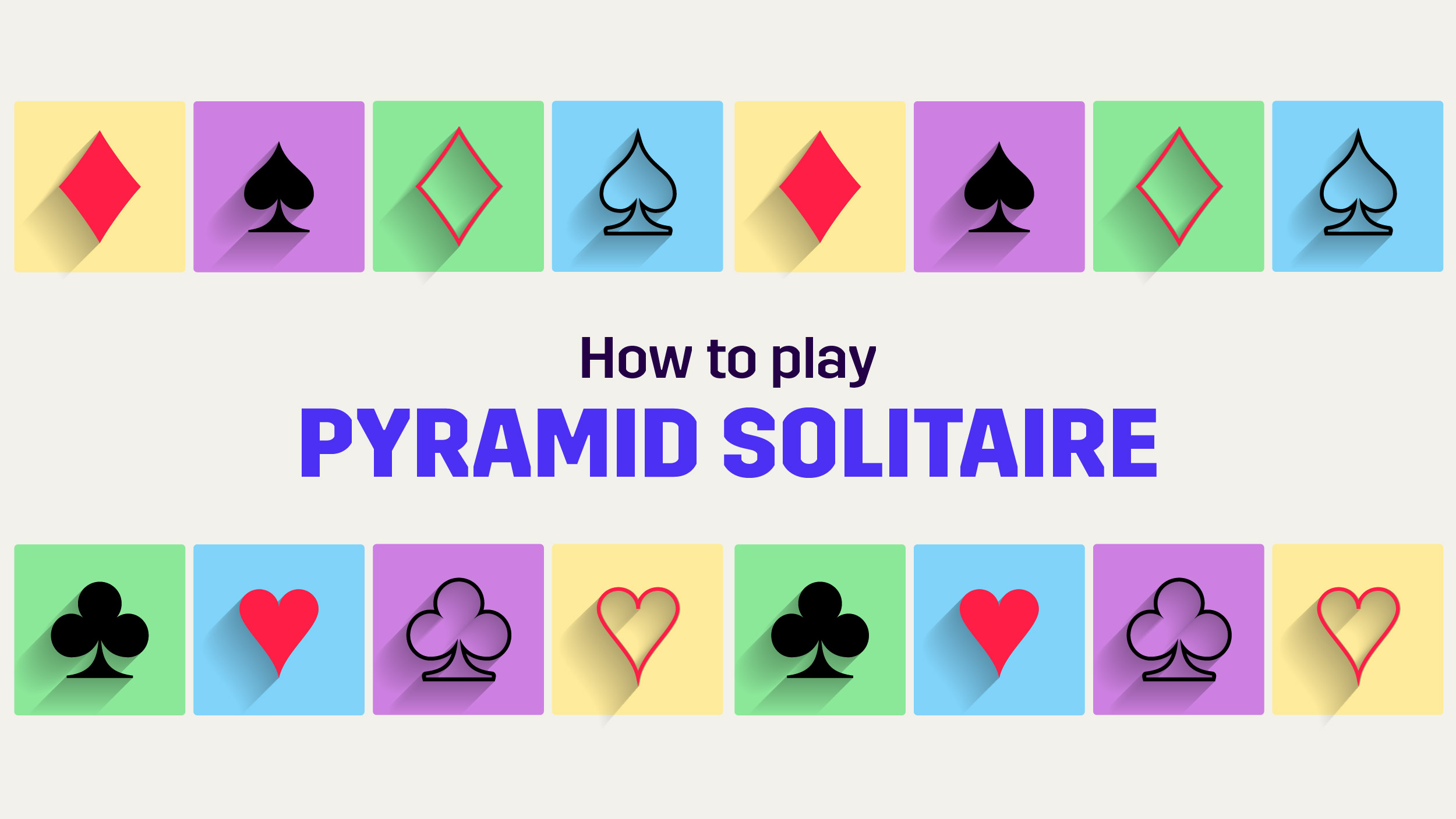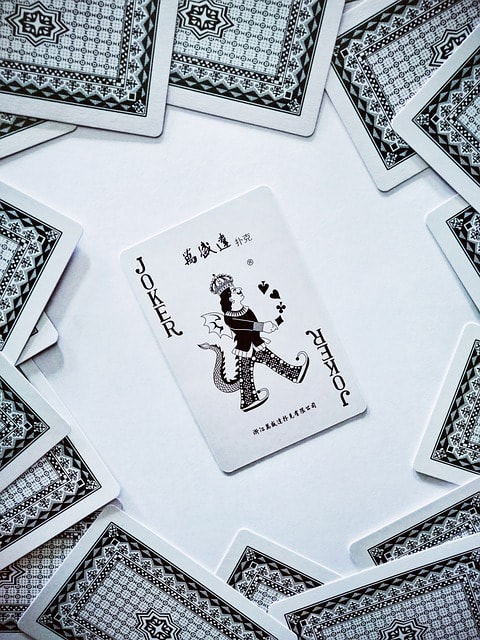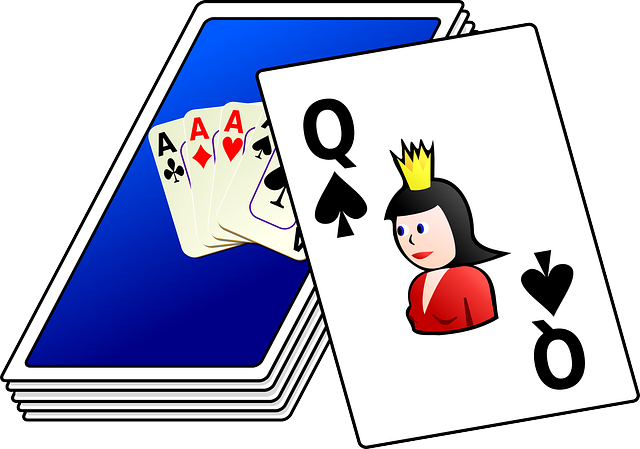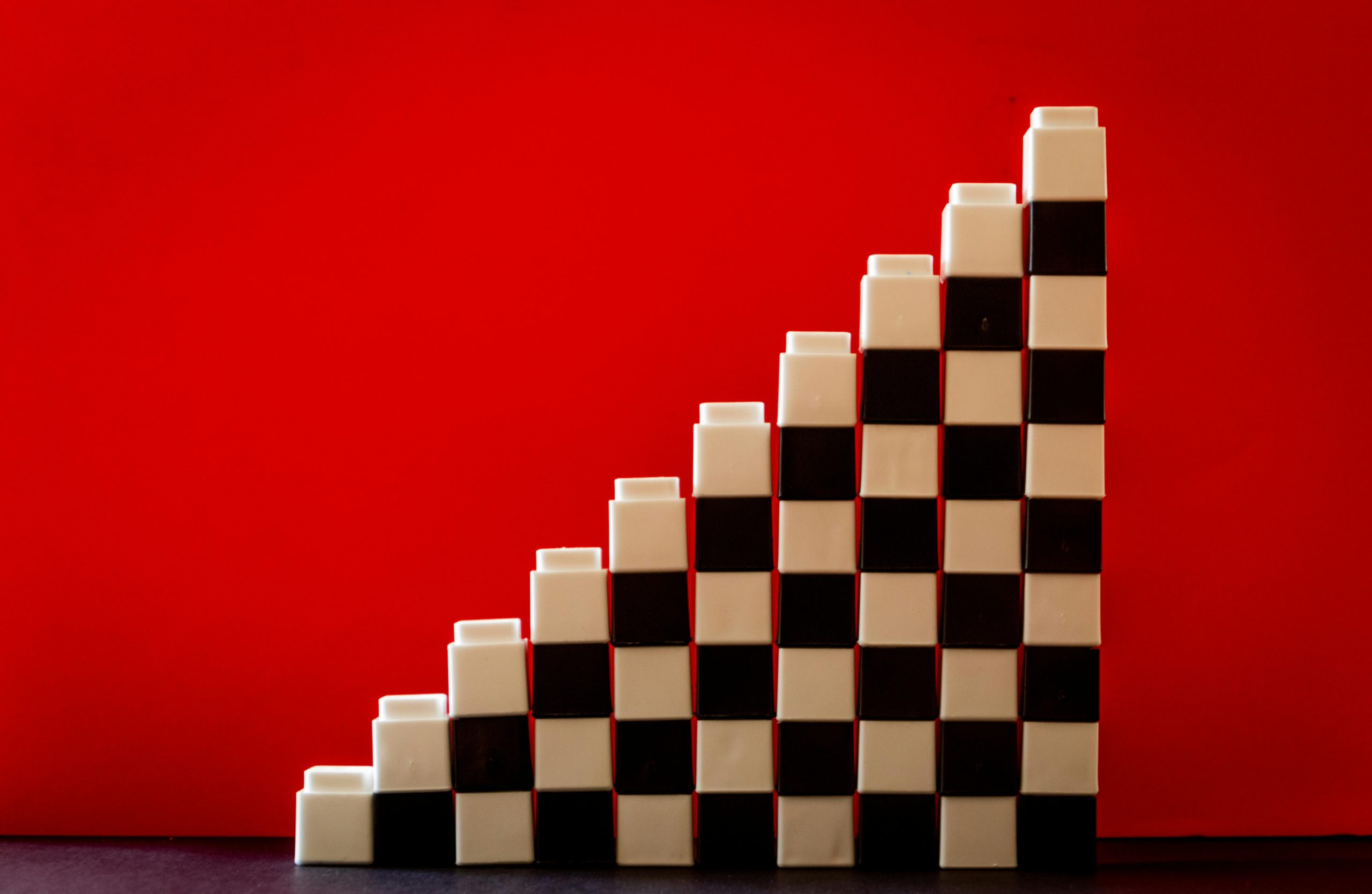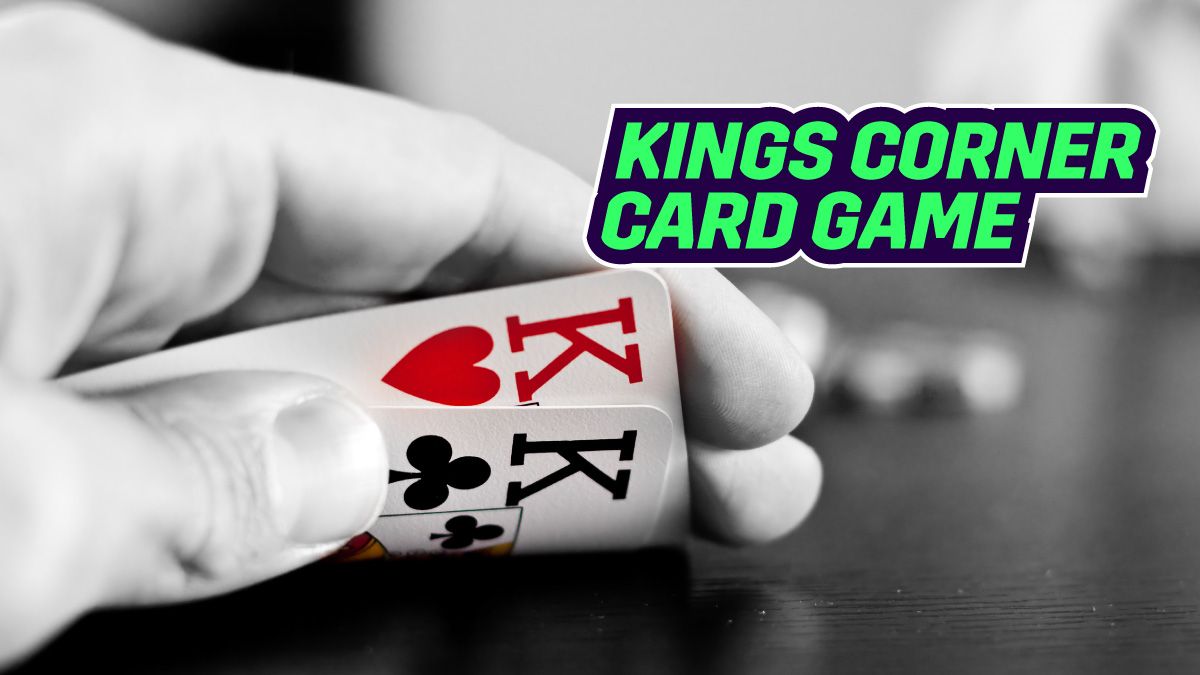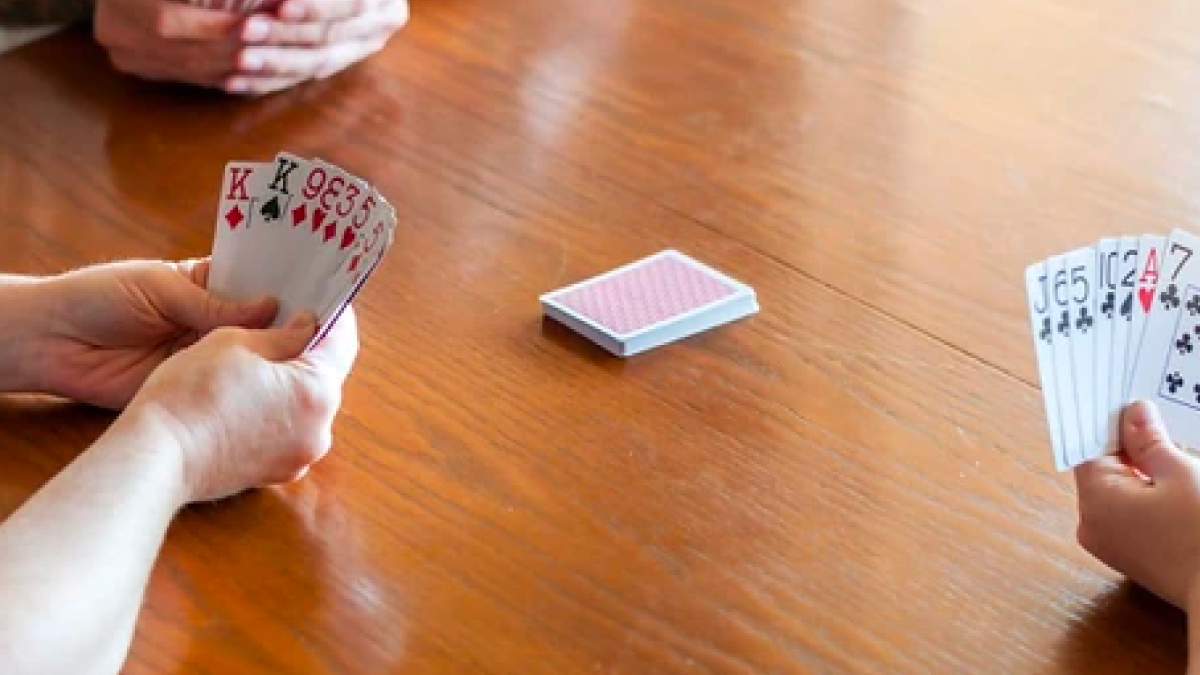Table of Contents
ToggleCard solitaire, or Patience (also understood as “solitaire with cards”), primarily involves arranging cards in a specific layout and sorting them based on different rules. The most widely played solitaire card game is Klondike. Other popular variations include Cube, Yukon, Spider, FreeCell, and Pyramid Solitaire. Now, let’s get to know Pyramid solitaire better!
What is Pyramid Solitaire?
Pyramid Solitaire is a game that one player can play wherein the objective is to discard all fifty-two (52) cards into a discard pile and destroy the pyramid in that fashion. Technically, you win the game when the pyramid vanishes, so not all cards will have to be moved to the discard pile.
When you discard cards, you should do it in pairs, and each pair must equal a value of thirteen (13). We will get into card values later in this article, but keep in mind that discarding cards whose total comes to thirteen is essential in uncovering more cards in the pyramid you can discard.
Also Read: Spider Solitaire 4 Suits
How to Play Pyramid Solitaire?
Here’s everything you know to learn how to play pyramid solitaire.
The Objective of the Game
Your goal in Pyramid Solitaire is to move card pairs that comprise a value of thirteen (13) from the pyramid down to the discard pile (foundation)—match cards based on their face value to move them.
As the Kings possess a value of thirteen, you can immediately move them to the foundation as a single card. The best score you can attain in the game is zero since the fundamental notion of the game is to move every game to the foundation. If there are any cards you cannot form into pairs, it results in a loss. This renders it vastly different from several other games where you try to score the highest number of points to win!
Setting up the Game
Start setting up Pyramid solitaire by shuffling your fifty-two-card deck, and commence the pyramid by putting the first card face-up. To begin the second row, you place a couple more face-up cards marginally overlapping the top card. Repeat his pattern until you get to the bottom row with seven cards.
Once the pyramid’s construction is done, you resume with the remainder of the board. In certain games, you’ll do the second row of seven cards beneath (but not overlapping) the bottom row of the pyramid. This is known as the reserve, and these cards always remain available to be played. After dealing the tableau, place the remaining cards to the side face-up to create the stockpile, and you will use cards from this pile when the game is in progress.
Moving your top card to the discard pile from the stockpile makes sense. The cards in the discard pile are also positioned face-up – the opposite of their placement in the stock. One can play from either pile all through the game.
Number of Players
Pyramid Solitaire is traditionally played by a single player. However, variations of the game can be adapted for multiple players if desired.
Card Deck
Pyramid Solitaire uses a standard deck of 52 cards. The cards are arranged in a pyramid shape, with the bottom row containing the most cards and each row above having one less card.
Gameplay
Start exposing cards from the draw pile – one card at a time. If you do not use a card from the draw pile, cover it up with the next card from the pile. You can always use it later in the game, but only when it gets exposed as soon as any draw pile cards atop can be discarded.
Whenever the value of two exposed cards is 13, you can discard them. This version of the game frequently gets the name Solitaire 13 because of this. However, discarding the cards in the waste pile is your call, and there will be occasions when it tactically makes sense not to discard them.
If no overlapping cards are present, the cards present in the pyramid are exposed. In any situation in the game, only a single card from the draw pile is revealed—the latest draw pile card to be flipped is the only exposed card.
For instance, if a four and a nine are exposed cards from the pyramid, you can discard them in the waste pile. If an eight is one of the exposed cards from the pyramid and a five is revealed after turning up from the draw pile, discard them. This is how to play pyramid solitaire!
Card Values
As mentioned before, Kings are worth 13. Queens are worth 12, Jacks are worth 11, and Aces are worth 1. The rest of the cards are as per their respective face values. All the cards, excluding the Joker, are used in this game.
Here are some possible discard combinations:
King – As a single card
Queen and an Ace (12+1)
Jack and 2 (11+2)
3 and 10
4 and 9
5 and 8
6 and 7
Pyramid Solitaire Rules
Let’s take a look at the basic Pyramid Solitaire rules.
Draw cards from the stockpile one at a time.
If you cannot pair a card with another available card, it is moved to a waste pile, the topmost exposed card that always remains available for pairing.
Any time a pair of available cards totals 13, they can be moved to the waste pile. This also applies to single-exposed kings.
Available pyramid cards include any exposed cards and comprise any of the six reserve cards, the latest card turned from the stock, the topmost card on the waste pile, and any other wholly uncovered card in the pyramid.
Only the six bottom-row cards from the pyramid are available at the beginning of the game. They make other cards lying higher up in the pyramid available as they get removed.
For any pyramid card to become available, it should be totally exposed by removing only the cards that cover it. When the stock is exhausted, and you cannot form more pairs of 13, the game ends.
How to Win Pyramid Solitaire?
You win a game of Pyramid Solitaire when the draw pile is exhausted, or all the cards have been removed from the pyramid, whichever occurs first.
The game concludes when you can legally make no more pairs, or the pyramid is destroyed. You win when the pyramid is destroyed, but lose if it ends without destruction.
Pyramid Solitaire Strategies
Once you are aware of the pyramid solitaire rules and you start playing the game, the strategies below will come in handy. They are valid even if you are playing pyramid solitaire online.
Utilize Hints and Undo Options
Many platforms offer hints or an undo feature in online Pyramid Solitaire. Use these tools to your advantage, especially if you are unsure about your moves. Hints can guide you toward potential pairs, while the undo option lets you rethink and try different strategies without penalty. This is perfect during your practice sessions, as they can guide you in the right direction.
Track the Draw Pile
Be mindful of how many times you have cycled through the cards and plan your moves accordingly. This helps you make the most of the cards available and avoid running out of options too soon.
Prioritize Pyramid Pairs
Keep an eye on matching pairs of the cards in the pyramid rather than using cards from the draw pile. This helps uncover more cards and can prevent the game from stalling due to blocked cards.
Remember Card Combinations
Keep in mind which cards combine to make 13. For example, it can be 7 and 6, 8 and 5. This quick mental check can speed up your decision-making and help you spot only cards that make pairs faster.
Don’t Clear Cards Without a Plan
Avoid clearing cards to the waste pile just because you can. Make sure each move contributes to your overall strategy, like uncovering blocked cards or preparing for future pairs. This thoughtfulness can save you from wasted moves.
Pyramid Solitaire Variations
Here are a few popular pyramid solitaire variations.
Relaxed Pyramid
In this variation, players can match cards from the stockpile without having to match them with cards from the pyramid. This makes the game a bit easier, as players have more options for pairing and can potentially clear more cards.
Double Pyramid
Double Pyramid Solitaire features two pyramids side by side with a shared foundation. Players need to clear both pyramids by forming pairs that total 13. This variation increases the complexity and requires careful planning to manage the larger layout.
Tri-Peaks Pyramid
This variation uses three pyramid peaks instead of one. The layout involves three overlapping pyramids, and the objective is to remove all cards from the layout. The game can be played with or without a draw pile and adds a different level of challenge.
Tut’s Tomb
Tut’s Tomb is a version where players can only use cards not covered by others, both in the pyramid and stockpile. This limitation makes it more challenging to find pairs and requires careful consideration of each move.
FAQs
How many rows in pyramid solitaire?
To get the pyramid going, one card is dealt face-up atop the playing area, followed by two cards underneath and partly covering it, followed by another three beneath, and so on. This completes a row of seven cards for a total of twenty-eight cards (or six rows of twenty-one cards).
What is a good score in pyramid solitaire?
Count the number of remaining cards that remain face-up in the pyramid to score. Strangely, pyramid solitaire features an ideal score of zero, where you have matched all cards into the foundation.
Is pyramid solitaire easy?
On average, nearly 80% of all Solitaire games are winnable. Pyramid—one of the most straightforward Solitaire games—offers the lowest probability of winning, with odds ranging between 0.5 and 5.5%. It is indeed a challenge when you’re playing pyramid solitaire.

